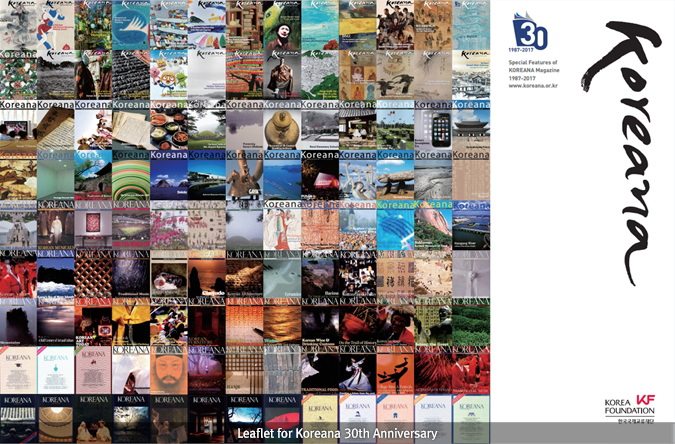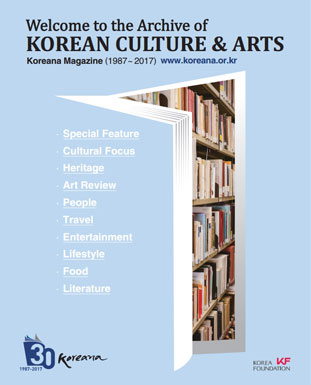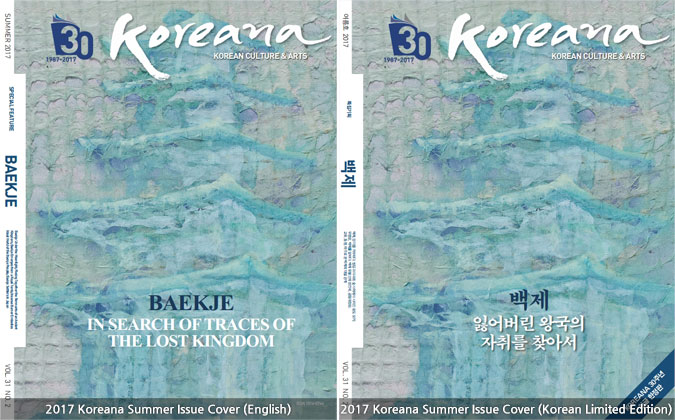Koreana, a quarterly magazine on Korean culture and arts published in eleven languages by the Korea Foundation, marks its 30th anniversary this year.
(
www.koreana.or.kr)

As a representative magazine to introduce Korea to non-Korean audiences, Koreana has examined countless aspects of Korea over the past three decades, ever since the publication of its first edition in the autumn of 1987. In addition to special features on Korean culture, each issue of Koreana deals with a diverse range of topics, including Korean cultural heritage, nature and people. It also includes a series about ostensibly ordinary Koreans who nonetheless attract the interest of the magazine’s global readership. Since 1993, Koreana carries translations of Korean short stories and related commentaries by literary critics. So far, a total of 90 outstanding short stories by Korean authors have been introduced to the magazine’s readers around the world. In the absence of sufficient reading materials on Korean culture, Koreana has served as a valuable resource, both for general readers and scholars. In fact, Koreana has become one of the most widely utilized resources on Korea as it is distributed to overseas universities and public libraries which otherwise do not house a large collection of Korea-related materials. Koreana contributes to balancing overseas excitement for Korean culture, which often tilts toward popular culture, such as K-pop and TV dramas.

Koreana was founded in 1987, prior to the 1988 Summer Olympics in Seoul, with the first autumn issue published in English, followed by a Japanese version the next year. Editions in other languages soon followed. A Chinese version was added in 1993, on the heels of the establishment of diplomatic relations between China and the Republic of Korea. Spanish and French versions soon followed, and with the rising popularity of Korean culture in the 21st century, Koreana then began issuing editions in Russian, Arabic, German, and Indonesian. Published both in print and electronically, Koreana is the only Korean periodical that is available in nine languages - eleven if you add the Vietnamese and Korean versions which are exclusively available as webzines at this time. (
www.koreana.or.kr) With a readership in around 160 countries, the magazine represents a rare case in the international publishing sector.
As it was predominantly geared towards foreign audiences for the past 30 years, Koreana remains somewhat unfamiliar to Korean readers. Some people even mistake the quarterly for a cosmetic brand or a hotel in Seoul which bears the same name. To increase awareness of the magazine within Korea, the Korea Foundation therefore publishes a limited printed edition of Koreana’s summer issue in Korean to mark its 30th anniversary this year. The publication of the special edition in Korean is also aimed at the increasing number of foreign residents in Korea who are enthusiastic about Korean culture and learning Korean.

With the special feature of Koreana’s 30th anniversary summer issue, the editorial team realized a long-cherished plan to introduce the Kingdom of Baekje to its readers. The articles in the new issue focus on the history of Baekje, the center of cultural exchange and cooperation among Korea, China and Japan, and thus put a spotlight on the onset of Northeast Asian relations. The issue also features Hanseong Baekje, discovered in the forest of buildings and apartment complexes in Seoul; the Tomb of King Muryeong, which saved the history of Baekje from oblivion; the Gilt-bronze Incense Burner of Baekje, which highlights the perfect union of Confucianism, Buddhism and Taoism; and other neglected but unforgotten stories from Baekje. It also discusses Baekje’s particular relations with Japan, then called Wa, through the angles of exchange, alliance and migration to remind readers of the openness, friendship and international mindset of ancient Koreans 1,500 years ago.